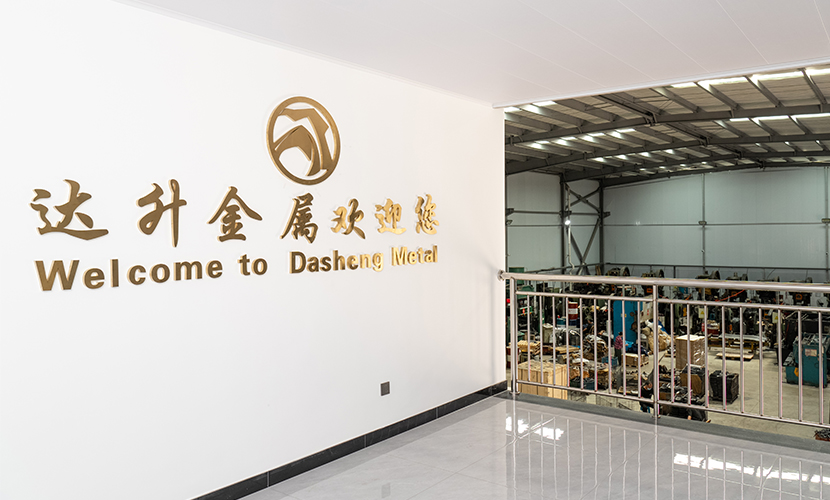Pallet Feet 47.4mm*47.4mm*30.5mm Height*2.5mm Thickness Sheet Metal Stamping Process Factory Accept OEM
47.4mm*47.4mm*30.5mm Height*2.5mm Thickness
3mm mid steel Anti-rust
47.4mm*47.4mm*30.5mm Height*2.5mm Thickness
3mm mid steel Anti-rust

Metal bending parts are widely used in various industries such as automotive, aerospace, construction, and electronics. They are formed into specific shapes and functions through mechanical bending d...
READ MOREMetal stamping parts are widely used in various fields such as automobiles, electronics, electrical appliances, and machinery. However, in actual production, burrs have always been a key focus of qual...
READ MOREMetal bending and drawing parts are a common type of precision components in manufacturing, widely used in the automotive, aerospace, home appliance, machinery, and electronics industries. The process...
READ MOREWhether you want to become our partner or need our professional guidance or support in product selections and problem solutions, our experts are always ready to help within 12 hours globally
contact UsPallet foot thickness metal sheet stamping process How does its material affect hardness?
Pallet foot thickness metal sheet stamping process is a processing method that uses stamping dies and stamping equipment to apply pressure to metal sheets to deform them and reach a preset shape and thickness. This process has the advantages of high production efficiency, high dimensional accuracy, and high material utilization. It is particularly suitable for mass production of metal products such as pallet feet. During the stamping process, the metal sheet is first placed between the upper and lower dies of the die, and then the sheet is plastically deformed by the strong pressure of the stamping machine to form the desired shape of the pallet foot. In this process, the precise design of the die and the reasonable setting of the stamping parameters are crucial to ensure product quality.
Different types of metal sheets have different physical and chemical properties, which determine their hardness and deformation behavior during the stamping process. Common pallet foot materials include carbon steel plates, stainless steel plates, and aluminum plates. Due to its high strength and hardness, it has become the preferred material for pallet foot manufacturing. Carbon content is a key factor affecting its hardness. By adjusting the carbon content and heat treatment process, its mechanical properties can be further optimized. It has good corrosion resistance and high hardness, and is suitable for pallet feet that need to be exposed to humid or corrosive environments for a long time. The hardness of stainless steel can also be adjusted by alloy composition and heat treatment process. Although it is lightweight, its hardness is relatively low. It may be necessary to increase its hardness through alloying or heat treatment to meet specific needs.
The chemical composition and initial state of the metal sheet have an important influence on its hardness. For example, the carbon content in carbon steel, the alloying elements in stainless steel, and the annealing state and normalizing state of the material will affect its hardness and mechanical properties after stamping. The stamping process itself will also affect the hardness of the metal sheet. Cold stamping usually causes the material to undergo work hardening, thereby increasing its hardness; while hot stamping may adjust the hardness and other mechanical properties of the material through heat treatment.
Select appropriate metal sheets according to product requirements and processing difficulty, ensure the accuracy and stability of the mold to reduce deformation and cracks during the stamping process, reasonably set parameters such as stamping speed, stamping force and stamping gap to ensure that the material is evenly stressed and deformed stably during the deformation process, use lubricants to reduce friction and heat accumulation between the mold and the material, reduce the risk of cracks, adjust the hardness and other mechanical properties of the material through heat treatment processes; improve the surface hardness and wear resistance of the material through surface treatments such as shot peening and carburizing.